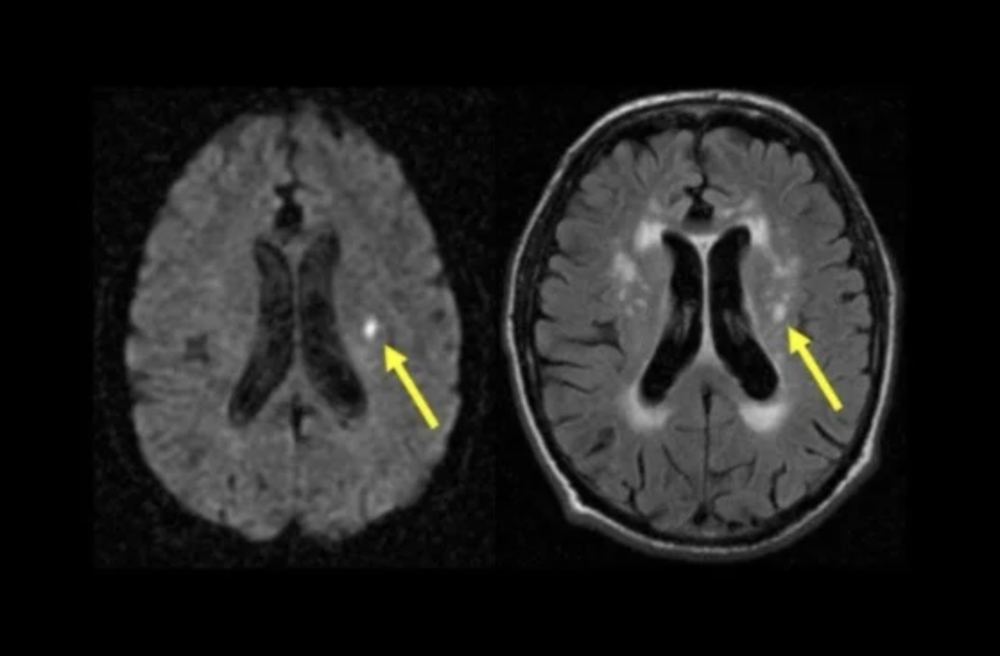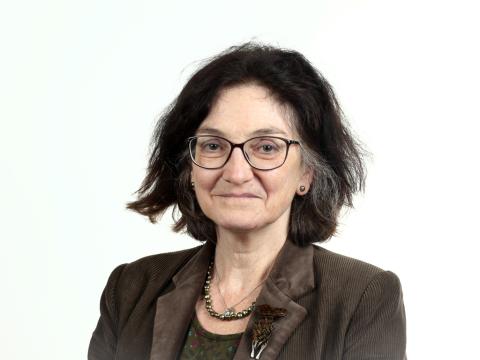Prof Joanna Wardlaw (UK DRI at Edinburgh) is setting up the first phase III trial in cerebral small vessel disease aimed at improving cognitive symptoms. Motivated to find an accessible treatment for this neglected condition, the world-leading clinician scientist is working to repurpose two drugs already licensed to treat heart and circulatory diseases.
This article is part of our ‘Deliver’ series, showcasing the UK DRI's mission to discover the causes of neurodegeneration, develop possible treatments and deliver solutions for healthy ageing.
Back in the 1990s, when a person suffered a stroke, it was believed that part of the brain was lost immediately and there was absolutely nothing medicine could do. In fact, these people were transported in a slow ambulance to hospital, where there was no treatment.
It was while completing her medical training a decade earlier, that Prof Joanna Wardlaw became interested in neurological diseases like stroke, focusing her studies on medical imaging inspired by innovations at that time. She wanted to make a difference to patients and, having read a medical report about a person being treated with intra-arterial clot busting drugs, set about establishing her own trial with this class of treatment.
Frustratingly, Joanna had to abandon her attempts, as she recalls, “The world was not ready. Stroke was not treated as an emergency or a priority by health services at that time”.
Fast-forward to 2024, Joanna is recognised as one of top 20 researchers dedicated to neuroscience, having pushed the frontiers of our understanding of stroke and in particular small vessel disease which contributes to a quarter of cases. Furthermore, her team are about to embark on a pioneering Phase III repurposing trial of drugs that help the small vessels to work better in this condition.
Small vessel disease, a neglected condition
The most common blood vessel disease in the brain is the embolism, which occurs when a small clot formed in the heart or on a fatty plaque of atheroma in the neck arteries breaks off, moves up into the brain and blocks a major blood vessel. Another cause is the aneurysm, when a blood vessel bursts, damaging the brain.
Then, there is small vessel disease, which is a major cause not only of stroke, but also of cognitive impairment and dementia.
“Instead of clots coming from somewhere else outside the brain or atheroma (a fatty buildup in the large blood vessels), the lining of cells inside the blood vessels that go deep into the brain stop working properly,” Joanna explains.
One of the big problems with accurate diagnosis of small vessel disease is that it can cause a number of different symptoms - as well as involving a discrete neurological incident (like a stroke), it can also cause a person to lose cognitive ability - so clinically it is a very difficult condition to recognise and therefore is neglected in research, according to Joanna.
The successful repurposing of drugs
Joanna’s most recent efforts are focused on finding solutions for small vessel disease, and in particular, lacunar stroke. This is a type of ischaemic stroke that occurs when there is a problem with the lining of a small arterial vessel deep in the brain, affecting the blood flow.
For the researcher, one of the big drawbacks historically with this stroke, is that clinically it has always been treated like any other such event.
“In the case of strokes which are due to clots coming from outside the brain, drugs like aspirin or statins - the ones which lower the fat levels in the blood - are very effective. However, they are not good at treating lacunar strokes,” she explains. To address this, Joanna and her team looked for drugs that were already available to treat blood vessel problems in the heart or that could replace, for instance, the missing molecules that help blood vessels regulate local blood flow.
“We were able to identify two drugs, isosorbide mononitrate and cilostazol, which had relevant modes of action and were complementary to each other,” she says.

A lacunar stroke being indicated on brain MRI scans
Over two sequential trials, Lacunar Intervention Trial-1 and 2 (LACI-1, -2), the researchers not only established that people could safely take both drugs for a whole year, but also found clues suggesting positive effects, such as preventing further strokes, and maintaining cognitive ability or physical function.
“People were able to remain in the trial for a year. But what was really interesting was that one of the drugs helped to reduce recurrent stroke and people also had better cognitive function after that period of time. And the people that got the other drug had fewer physical problems. And the people who got both drugs got the benefit of each of them without experiencing worse side effects,” Joanna explains.
Phase III of a model trial to treat other diseases
Earlier this summer, the National Institute for Health and Care Research (NIHR) granted funding for the LACI-3 Trial, the largest phase of Joanna’s small vessel disease research so far. It will involve recruiting 1,300 people to take one, or the other, or both drugs for 18 months, starting in January 2025. Joanna estimates that analysis of the results will take about five years, and hopes to confirm the benefits hinted at in LACI-2.
“This will be the first large trial in small vessel disease which will have a primary cognitive outcome, and the first trial in vascular cognitive impairment at phase three. And it will be the only active phase three trial in small vessel disease of any type,” she clarifies.
According to Joanna, the LACI trials have sparked international interest because they open the door to other drugs being repurposed in the same way, or even to similar trials for people with other conditions due to small vessel disease. For Alzheimer's, for example, she explains that as the disease has a large vascular component, it is possible that a different treatment could be found by combining an approach that helps to improve the health of blood vessels with another type of Alzheimer’s drug targeting a different aspect of the disease.
Another positive of this approach is accessibility of this treatment, if LACI-3 and all the regulatory processes are successful. Isosorbide mononitrate and cilostazol are two drugs that have been off-patent for some time, meaning they are inexpensive.
This means that if the results of LACI-3 are positive, this could be put into clinical practice very quickly. Not just in wealthy countries, but also parts of the world that are disadvantaged.
Group Leader and Clinical Director of the CVDR
“This means that if the results of LACI-3 are positive, this could be put into clinical practice very quickly. Not just in wealthy countries, but also parts of the world that are disadvantaged,” she says.
For Joanna, the most important thing about her work is that it is demonstrating that small vessel disease, the main cause of vascular dementia and vascular cognitive impairment, is treatable.
Unlike attempts with clot busting drugs in the 1990s, today is the right time.
“It’s a good time to be working in the stroke and dementia fields. I’m very pleased to see that we may be able to do something to help people with small vessel disease, vascular cognitive impairment and vascular dementia. If this works out, it will be fantastic,” she concludes.
Image credits: Shutterstock/create jobs 51, Prof Joanna Wardlaw

